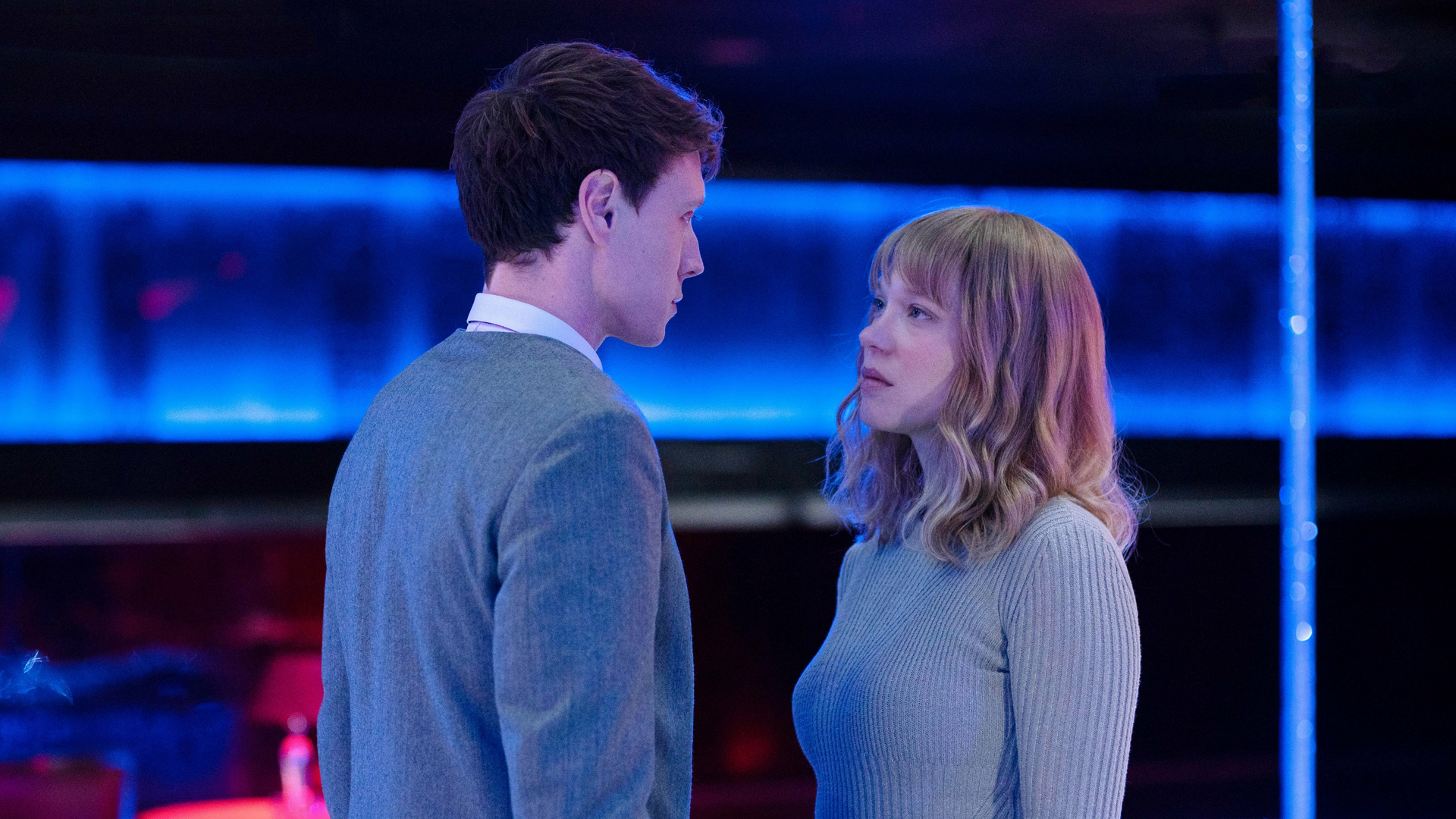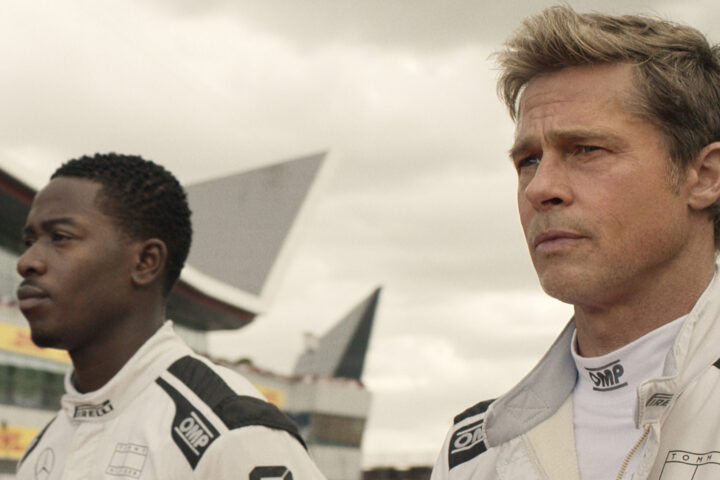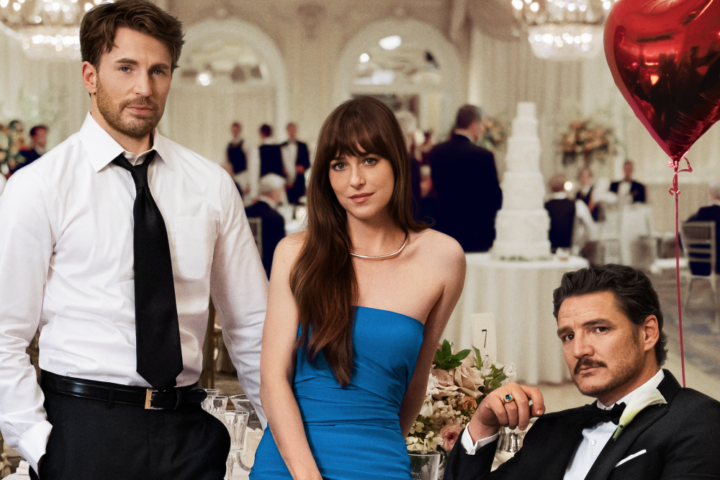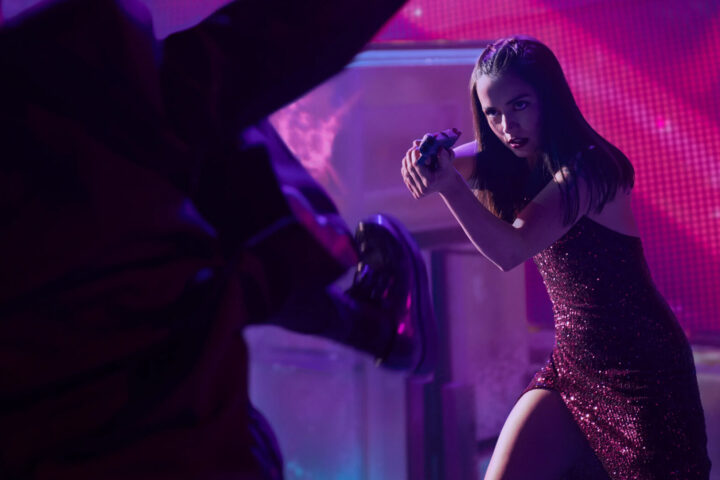In French filmmaker Bertrand Bonello’s The Beast, Leá Seydoux and George MacKay play triple roles in a conceptually audacious roundelay of impossible love and desire across three distinct eras. It’s a film nearly impossible to describe, at once a period costume melodrama, contemporary stalker thriller and a futuristic warning of self-eradication through technology, each passage informed by notions of transmigrated soul-mating and, perhaps, interventions of fate.
That’s a lot to cover and Bonello’s maximalist, 146-minute picture, based on Henry James 1903 novella The Beast in the Jungle, navigates its themes and shifting time frames with slow-burn calibration, a sci-fi vortex of rising intrigue. In Miller’s world the beast was a man’s fear of disaster, Bonello repurposing here as fear of risking romantic attachment and true love, and perhaps of a future insidiously working against such sentimental human follies both socially and technologically. The primary framing context is set in 2044 amidst a sleekly sophisticated Paris. Having recovered from a civil war two decades prior, its streets are mostly empty, animals roaming in proximity to humans and masks worn at all times, presumably due to lingering fallout.
In this world we meet Gabrielle (Seydoux), struggling to find meaningful work and considering a radical A.I. procedure to free her from her haunted past. A ghost in the machine determined to essentially wipe human DNA clean of nagging misgivings via a targeted digital lobotomy “purification,” the procedure—a long needle inserted into one’s ear—promises to erase traumatic past memories and any extremes of human emotion, which in this dystopian world is deemed due diligence for getting a job, where feelings and subjectivity based on individual sentiment a sign of fallibility. Better to wipe them clean, and if humans resist they will be unemployable in a world with 67% out of work, mostly replaced by A.I. Gabrielle resists committing to the procedure, which involves a spa-like chamber bat submerged in tar-like oil and, A Clockwork Orange style, reviewing painful periods of the past life before her eyes, her reactions evaluated by a bot designed to weed out 0.7% of unsuccessful patients.

Shuttling back to 1910 we meet another version of the same woman, or soul, also named Gabrielle Monnier (and also Seydoux), a celebrated Parisian pianist married to a doll manufacturing husband (Martin Scali) but involved in a tête-à-tête of destiny after reconnecting with a man met years earlier, Louis (MacKay). The pair has instant chemistry; even the mere touch of their hands is electric. But Gabriell nurses a deep-seated, lifelong fear that a “catastrophe” will happen should she give in to true love. This part of the picture, as the thwarted lovers entertain a clandestine connection and dance toward acknowledgement, is so deliberately paced and heady in hushed contemplation it begs to be shortened, despite a superb mounting of the 1910 Paris flood, which figures into a sequence where the artisan doll shop becomes a fiery, underwater ballet of death.
The picture takes off at the midpoint, Bonello thrusting into the high gear of 2014 Los Angeles, where we meet another Gabrielle Monnier (Seydoux, redux), a fledgling French actress about town house sitting in an upscale neighborhood while navigating cyber attacks and earthquakes, and Louis Lewanski (McKay), a seething incel rejected by women who records vengeful screeds online, a virgin at age 30 and consumed by gendered hate, prowling the neighborhood in search of vengeance.
Guess who gets targeted as the potential first victim of his hate spree? In this sequence, a fabulously controlled shift in tone and style, Brit actor MacKay (1917) comes full force center with a brilliant American outcast mask, a character barely able to hide his sexist, murderous rage. It’s no coincidence that 2014 was also the year of the real life, notorious Isla Vista killings by anointed “king of incels” Elliott Rodger, who murdered six people to assuage his socially outcast fury. Bonello’s invigorating leap from stately, turn of the century drawing room drama to contemporary thriller is a real kick. The creepiness factor to this sequence is palpable, building to a chilling crescendo of near quiet suspense.

There’s still another thread happening on the periphery and one that opens the film, which finds 2014 actress Gabrielle (or perhaps actually Seydoux herself in the opener) being directed against a green screen toward slaying an invader or invisible beast, a periodic merger of life and art.
At its heart The Beast is a sci-fi film where loneliness reigns and human connection is fraught with fear, physical death eminent at the hands of a roaring flood and psycho killer or while emotional demise by tech-inflicted weaponry. Across the picture, dolls intrigue, from period factory artisanship to bizarre, contemporary animatronic toddlers and, in the future, a sophisticated A.I. robot named Kelly, played by Saint Omer’s Guslagie Malanda, designed for practical or sexual companionship, who ironically is perfected to be more human just as the last remnants humanity are removed from man himself. This cleansing of emotion also destroys any hope for love, which Gabrielle deeply fears.
The Beast is fascinating in its many details, including a vacuous trio of female barflies, a futuristic David Lynch-like Parisian nightclub with a deadpan bartender (Lester Lovelace) and retro themed nights—like the film itself, the club moves between its own eras, including music and styles from 1962, 1973 and 1980—as well as a recurring reference to Madame Butterfly and multiple purposing of Roy Orbison’s 1962 romantic ballad Evergreen. Throughout, enigmas haunt the film, including an ominous pair of psychics and pigeons as avatars of impending tragedy.
“It’s very inventive but it’s difficult to see the emotion in it,” a character remarks at one juncture. Some may feel the same about Bonello’s demanding style, which prizes patience above all. With The Beast Bonello has made something defiantly conceptual; some may struggle with accessing its bold blend of romantic longing, goosebump thrills, cautionary sci-fi and lament for humanity lost. Throughout, the marvelous Seydoux’s boundless expressiveness is tour de force of emotionality and loss, carrying the picture. Her brilliantly multilayered work here will be tough to top this year, a trio of women (or just one) rendered in cool detachment, forbidden emotion and the longing of the damned—right to the chilling picture’s nervy, perfect final moment.
3 1/2 stars



